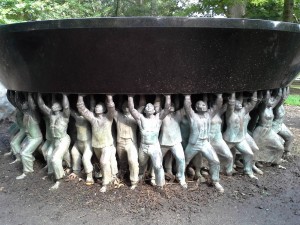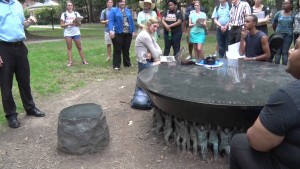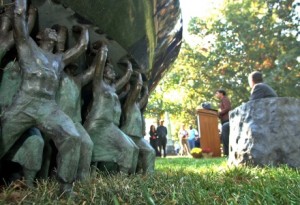When reading the articles for this week, I immediately thought of an article I read for another class, Patricidal Memory and the Passerby. The article is long and has a very complex argument I won’t try to reiterate here, but one aspect of it is that we ought to focus on is that we should look at the monumental, in this case the memories of great dead men and legacies of slavery and patriarchy, as it works through and around the movement of the small details that make up daily life. By refocusing our energy on the banal details of life we understand better how systems like white supremacy and patriarchy function. This could be easily applied to monuments like the slave table, which dehumanizes enslaved peoples by making them into symbols. A better monument might be enslaved families, or enslaved people performing daily tasks they would have at the college, except without the opportunity to literally use them as a table. As Mason B. Williams says in “The Crumbling Monuments of the Age of Marble”, “Discussing individuals and (where warranted) removing names is good—but it is just a start. The crucial next step is to rethink and reinvent the ways the nation commemorates.” I think this new commemoration must also deal with the problem of the monument itself, and how it is inherently a structure meant to deal with “great men” and “great events” instead of the equally important events which take place in our daily lives. Maybe Bryn Mawr could use a statue of servants in the dorms, with notes from the archives about their lives.
http://sfonline.barnard.edu/ps/schneide.htm



